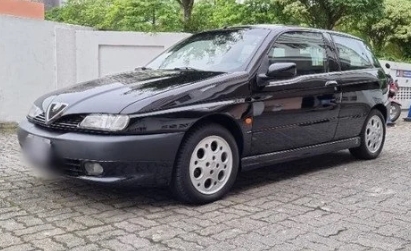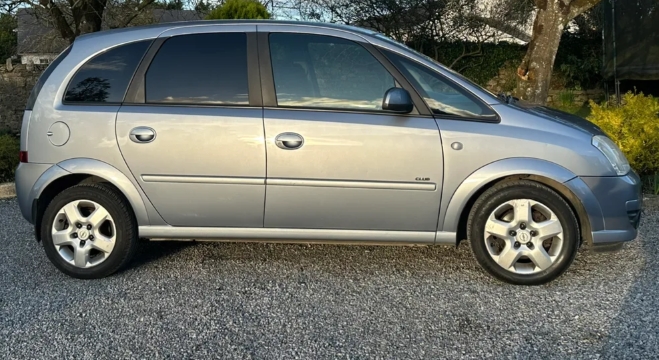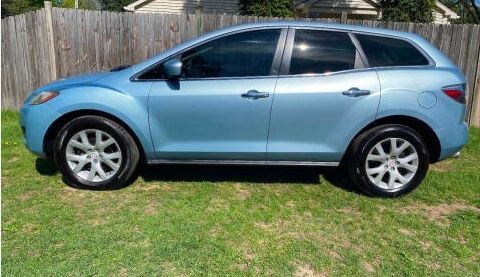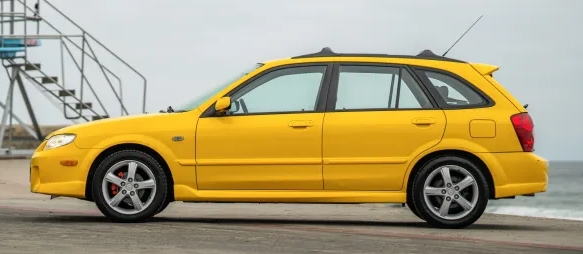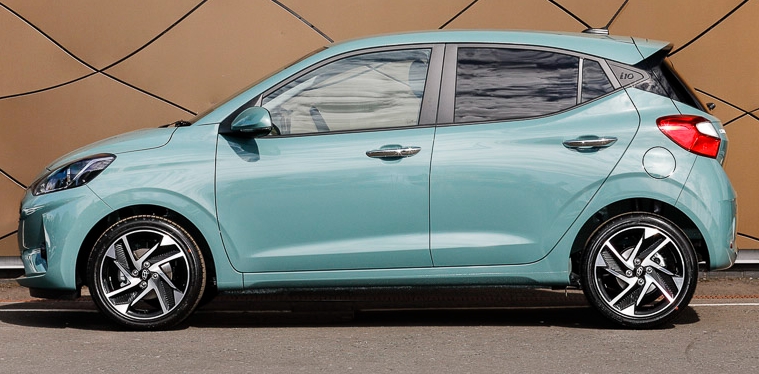From Hatchback to Hot Hatch Legend: The Evolution of the Alfa Romeo 145, 146, and 147
Alfa Romeo, a marque synonymous with passion, performance, and Italian flair, has a rich history of crafting some of the most desirable automobiles on the planet. While often celebrated for their intoxicating sports cars and elegant sedans, the company has also produced a series of compact hatchbacks that, while perhaps less overtly glamorous, played a crucial role in broadening the brand’s appeal and injecting a dose of driving enjoyment into the everyday. This article delves into the evolution of three such models: the Alfa Romeo 145, its suave sibling the 146, and their successor, the widely acclaimed 147.
The Bold New Direction: The Alfa Romeo 145 and 146 (1994-2000)
The mid-1990s marked a significant turning point for Alfa Romeo. Facing increasing pressure from a competitive market and a need to modernize their product line, the company introduced two distinct yet related hatchbacks aimed at a younger, more dynamic audience. The Alfa Romeo 145, launched in 1994, was the sportier, more aggressively styled of the pair. It featured a three-door body style, a lower roofline, and sharper creases, clearly designed to appeal to those who valued aggressive aesthetics and a sporting feel.
The Alfa Romeo 146, launched concurrently in 1995, presented a more pragmatic and elegant alternative. With its five-door configuration, a more upright and conventional profile, and a subtly different front-end design, the 146 was positioned as the family-friendly option, capable of carrying more passengers and luggage with ease. Despite their visual differences, both cars shared the same underlying platform and mechanicals, offering a taste of Alfa Romeo ownership at a more accessible price point.
.
THIS could come in handy for your auto garage (and everywhere else!):

.
Engine Line-up and Trim Levels (145/146):
The initial engine offerings for both the 145 and 146 reflected Alfa Romeo’s tradition of offering lively yet efficient powertrains. Early models were available with:
- 1.3 L Boxer-4 (1351 cc): This modest but characterful engine, shared with its Fiat brethren, provided the entry-level option.
- 1.6 L Boxer-4 (1598 cc): A popular choice, offering a better balance of performance and economy.
- 1.7 L Boxer-4 (1712 cc): The more powerful of the two naturally aspirated four-cylinder options, delivering a more spirited drive.
- 2.0 L Twin Spark (1970 cc): This iconic Alfa Romeo engine, featuring twin spark plugs per cylinder for improved combustion, was reserved for the sportier variants and offered a significant performance upgrade.
Over the years, the engine lineup saw refinements and some additions:
- 1.4 L Twin Spark (1370 cc): Introduced later, this replaced the 1.3 Boxer and offered improved refinement and power.
- 1.8 L Twin Spark (1747 cc): This engine became a staple, providing a strong mid-range performance.
- 1.9 L JTD Diesel (1910 cc): In 1998, Alfa Romeo introduced its first common-rail diesel engine into these models, offering excellent fuel economy and torque, particularly for those covering longer distances.
Trim Levels (145/146):
The trim levels for the 145 and 146 were generally designed to offer increasing levels of equipment and sportiness:
- Base/Standard: The entry-level models featured essential equipment, often with the smaller engines.
- Lusso: This trim level typically added a touch of luxury, with features like alloy wheels, metallic paint, improved upholstery, and electric windows.
- Ti (Turismo Internazionale): This was the performance-oriented trim, usually featuring sportier suspension, larger alloy wheels, body kit elements, and sports seats. The Ti variants often came with the more powerful engines, especially the 2.0 Twin Spark.
- QV (Quadrifoglio Verde): While not used on all models, the iconic QV badge sometimes graced the sportiest versions, signifying top performance within the range.
The 145 and 146 were a critical step for Alfa Romeo, allowing them to compete in the highly competitive compact segment. They offered a distinct Italian flavor, lively handling, and engaging powertrains that set them apart from more utilitarian rivals. However, they also inherited some of the brand’s historical reputation for electrical gremlins and build quality concerns, which sometimes hampered their commercial success.
The Game Changer: The Alfa Romeo 147 (2000-2010)
In 2000, Alfa Romeo unveiled the Alfa Romeo 147, the successor to both the 145 and 146. This was a significant evolution, marking a departure from the dual-model strategy. The 147 was designed as a single, coherent model, adopting a three-door silhouette that retained a strong sporting character, while its five-door counterpart, introduced in 2001, offered increased practicality without sacrificing too much of the visual appeal.
The 147 was a breath of fresh air for Alfa Romeo and the compact segment. Its design was a masterclass in modern Italian styling, featuring a distinctive V-shaped grille, expressive headlights, and flowing lines that exuded sporty dynamism. It was a car that looked as good as it felt to drive, instantly recognizable and undeniably desirable.
Engine Line-up and Trim Levels (147):
The 147 built upon the successful engine strategies of its predecessors while introducing more advanced technologies.
Initial Engine Offerings (2000-2004):
- 1.6 L Twin Spark ECO (1598 cc): A fuel-efficient version of the 1.6 Twin Spark, offering adequate performance.
- 1.6 L Twin Spark (1598 cc): The standard 1.6, providing a livelier response.
- 2.0 L Twin Spark (1970 cc): The stalwart of the range, known for its smooth power delivery and characteristic Alfa Romeo soundtrack.
- 1.9 JTD (1910 cc): The common-rail diesel, offering excellent torque and economy, available in various power outputs.
Later Additions and Refinements:
- 1.9 JTDm (1910 cc): The evolution of the JTD, with improved efficiency and power, often appearing in higher-spec models.
- 3.2 L V6 24v (3179 cc) – GTA: The undisputed king of the range, the GTA (Gran Turismo Alleggerita), introduced in 2002, was a true hot hatch legend. Powered by the glorious Busso V6 engine, it delivered a visceral driving experience, blistering performance, and an exhaust note that was pure automotive opera. The GTA was available in both three and five-door configurations.
Trim Levels (147):
The 147’s trim structure was designed to cater to a broader spectrum of buyers, from those seeking value to performance enthusiasts.
- Distinctive: The entry-level trim, offering the core Alfa Romeo experience with essential features.
- Progressione: A mid-range option, adding more comfort and convenience features.
- Lusso: Similar to its predecessors, this trim focused on luxury with leather upholstery, climate control, and premium audio systems.
- Distinctive Plus: An enhanced “Distinctive” trim, often featuring larger wheels and more desirable options.
- Q2: A significant mechanical upgrade for certain models, the Q2 differential was a limited-slip unit that vastly improved traction and cornering ability, especially in the sportier variants.
- GTA: The ultimate 147, this was a trim level in itself, defined by its V6 engine, unique styling, performance suspension, and larger brakes.
Facelifts and Updates:
The 147 underwent a significant facelift in 2004. This was a crucial update that revitalized the model and brought it in line with Alfa Romeo’s evolving design language. The facelift brought:
- Revised Front End: A new grille that mirrored the larger Alfa Romeo 159, updated headlights, and a re-profiled bumper.
- Updated Interior: Improved materials, a redesigned dashboard, and updated infotainment options.
- New Engine Options: Alongside the existing engines, the facelift introduced the 1.9 JTDm with increased power outputs, including a 150 bhp version which became a popular choice.
A second, more subtle facelift occurred in 2007, primarily focusing on interior trim and feature upgrades, further refining the car’s appeal in its later years.
Legacy and Impact:
The Alfa Romeo 145, 146, and particularly the 147, represent an important chapter in the company’s history.
The 145 and 146 were the pioneers, proving that Alfa Romeo could successfully translate its sporting DNA into the compact hatchback segment. They offered a distinct alternative to the German and French rivals, appealing to those who sought a more engaging and stylish experience. While not without their flaws, they laid the groundwork for what was to come.
The 147, however, is the darling of this lineage. It was a car that truly captured the essence of Alfa Romeo in a compact package. Its stunning design, engaging handling, and, in the case of the GTA, exhilarating performance, earned it widespread critical acclaim and a devoted following. It proved that a compact hatchback could be a desirable, emotional purchase. The 147 was a commercial success for Alfa Romeo, significantly boosting sales and helping to redefine the brand’s image for a new generation. It successfully competed with established rivals and often outperformed them in terms of style and driving pleasure.
Though production of the 147 ceased in 2010, replaced by the Alfa Romeo Giulietta, its legacy endures. These three models, from the fraternal independence of the 145/146 to the unified brilliance of the 147, showcase Alfa Romeo’s enduring commitment to building cars that ignite the senses and celebrate the joy of driving. They are a testament to the fact that even in the everyday world of compact hatchbacks, Italian passion and engineering prowess can create something truly special.
